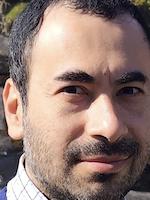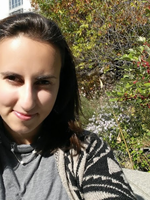


Participants who engage in this session will learn about two hard-to-teach concepts in math and science, and try two new cutting-edge, but widely accessible, technologies that can support teachers and learners. First, teachers will engage with LiDAR Motion, a free, gamified app for iOS that makes use of light detection and ranging technology (LiDAR) to measure distances between the user and a flat surface. By engaging in up to nine sets of challenges, participants will move to match the motion, and at the same time make meaning out of their body’s motion and position-time graphs (supporting mathematical modeling skills and physics concepts). Second, teachers will engage with Magna AR, a free, open exploration-based app for Android and iOS that anchors 3-D field vectors in space, allowing users to plot the Earth’s environmental magnetic field and fields around permanent magnets (supporting visuospatial skills and physics concepts). Sample lesson plans will be available for review, including the Graph Match challenge for the LiDAR Motion app, and Planetary Magnetism and Energy in Solar Flares lesson plans for Magna AR (all available on our project websites). Teachers will demonstrate success by completing one or more challenges on LiDAR or correctly visualizing at least one magnetic field, and reflecting on the lesson plans with the presenters. At the conclusion of the session, participants will be empowered with the knowledge of how to access and share the technological and pedagogical resources with their students and their peers.
If presented in a playground format, apps and activities will be shared with participants as they come by. Depending upon the content expertise or interest area, the presenter will share one or both of the two apps (LiDAR Motion or Magna AR), and invite the participant to either use a smartphone borrowed from the exhibit or to download the app(s) onto their own smartphone. Participants will be able to interact with LiDAR Motion challenges by walking a small distance forward and backward from a flat poster board on the table, or, with Magna AR, by mapping the magnetic field of the space around the table or around a permanent magnet that is available to them. Time of engagement will be variable depending upon the interest of the attendees, but may range from 5 minutes (for a quick interactive demo and lesson reflection) to 20 minutes or more. The process of engagement will be highly interactive, in which the majority of the time is spent by the participants actively using the apps to complete the challenges or carry out the exploration tasks.
Each of our projects is funded by the National Science Foundation (grants #2114586 and #1822728), and were therefore deemed worthy of public funding because of their foundation on discipline-based education research and ongoing research projects.
Read about research foundations of LiDAR Motion: https://www.lidar-motion.net/post/building-a-lidar-based-position-visualizer-rationale
Read about the research foundations of Magna AR: https://www.magna-ar.net/post/supporting-conceptual-understandings-of-fields-a-review-of-the-research
Research-based publications that have resulted from these projects include the following:
Vieyra, R. & Vieyra, C. (2022, 04). Immersive learning experiences in augmented reality (AR): Visualizing and interacting with magnetic fields. In S. Macrine & J. Fugate (Eds.), Movement Matters: How Embodied Cognition Informs Teaching and Learning. Cambridge, MA: MIT Press.
Vieyra, R., Megowan-Romanowicz, C., O’Brien, D. O., Vieyra Cortés, C., & Johnson-Glenberg, M. (under review). Harnessing the digital science education revolution: Smartphone sensors as teaching tools. In S. Asim, J. Ellis, D. Slykhuis, & J. Trumble (Eds.), Theoretical and Practical Teaching Strategies for K-12 Science Education in the Digital Age. IGI Global.
Johnson-Glenberg, M., Kumar, A., Megowan-Romanowicz, C., & Vieyra, R. (under review). Embodied collaborative AR for magnetic fields and designing multi-dimensional digitized assessments for XR in education. International Journal of Computer-Supported Collaborative Learning.
Vieyra, R. & López, R. (accepted). Physics in a space science context: Two learning sequences to teach about the properties of electromagnetic waves and fields. The Physics Teacher.
Vieyra, R., Vieyra, C., Pendrill, A.-M., & Xu, B. (2020). Gamified physics challenges for teachers and the public. Physics Education, 55(4), 1-7.
Vieyra, R., Vieyra, C., Jeanjacquot, P., Marti, A., & Monteiro, M. (2015). Turn your smartphone into a science laboratory. The Science Teacher, 82(9), 32-40.
However, attendees are invited to use their own devices, and can easily download the following app (which includes the two apps), which do not require any kind of registration or accounts:
For Android: https://play.google.com/store/apps/details?id=com.chrystianvieyra.physicstoolboxsuite&hl=en_US&gl=US
For iOS: https://apps.apple.com/us/app/physics-toolbox-sensor-suite/id1128914250?platform=iphone